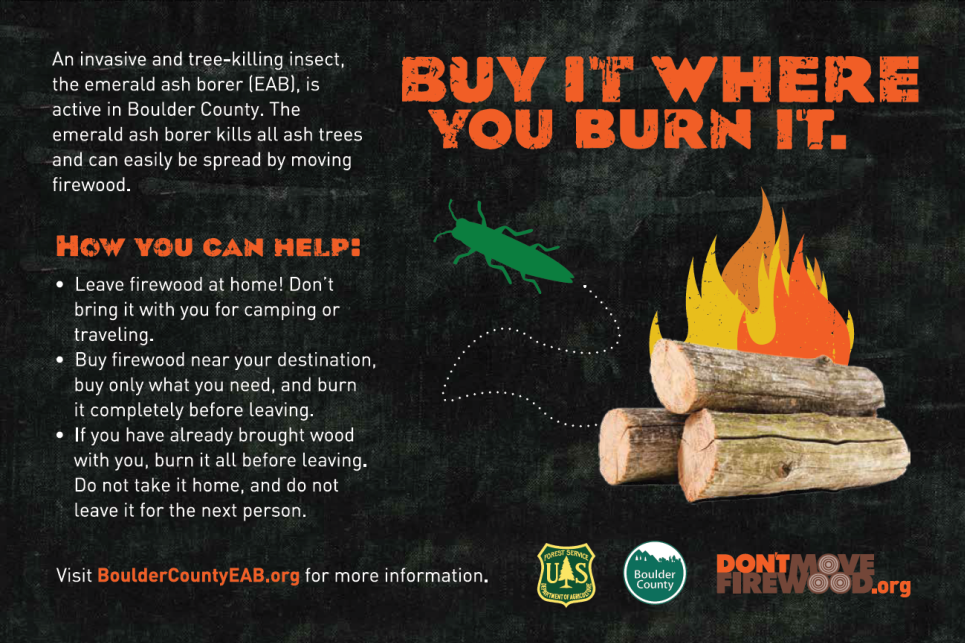Guest blog by Brett Stadsvold, EAB Coordinator for Boulder County Parks & Open Space, Colorado
In the dry and sunny Colorado climate, ash trees provide welcomed shade in our cities and backyards -but now those trees and the shade they provided are threatened by emerald ash borer (EAB). The invasive insect, EAB was discovered in Boulder, Colorado in September 2013 and is now presumed to be located throughout the city. Foresters that are familiar with EAB know that once it is found in an area there is little hope for ash trees surviving the wave of ash decline without intervention.

Boulder County advertisement on the Denver RTD buses stationed in the Boulder Terminal
Most cities and towns in Boulder County have taken action to manage public ash trees, but a high percentage of the ash tree population in the county is located on private property. One of the biggest advantages agencies can gain when managing EAB is more time. In an effort to increase the time Boulder County and its cities and towns have for EAB management, agency staff are proactively educating residents on ash tree identification, private EAB plan development, and proper firewood practices.
With grant assistance from the Western IPM Center, Boulder County was able hire one dedicated staff person to attend public events and provide free EAB education for county residents. The grant also provided funding for a campaign to target property owners via direct mailers, social media, and six weeks of bus advertisements urging residents to learn how to identify ash trees and create an EAB management plan for private ash trees.
"Buy it Where You Burn it" firewood sign encouraging residents to obtain and burn local wood
Boulder County is a tourist destination for camping and recreation enthusiasts with many modern campgrounds and abundant dispersed camping areas in the surrounding mountains. Firewood often accompanies campers destined for the mountains, and we are concerned that EAB could be dispersed further as campers move with firewood across the county. In 2016, Boulder County plans to print firewood signs and work with the United States Forest Service and firewood sellers to place signage encouraging firewood users to obtain and burn firewood locally. DontMoveFirewood.org produced the digital content that will be both printed on yard signs in the National Forest Campgrounds in Boulder County, and used for a related social media campaign.
Proactive public education and outreach in multiple formats is necessary to build the local knowledge base on EAB and proper firewood practices. Boulder County thanks The Western IPM Center, DontMoveFirewood.org, and the United States Forest Service as being wonderful partners on this collaborative education effort.




